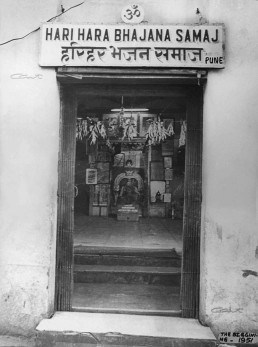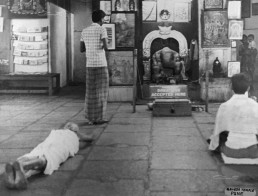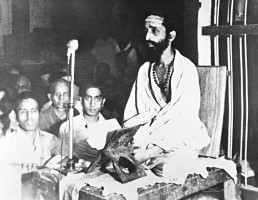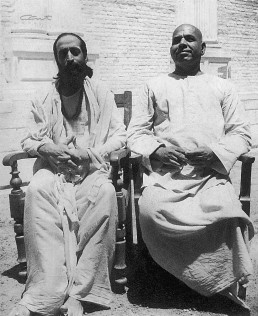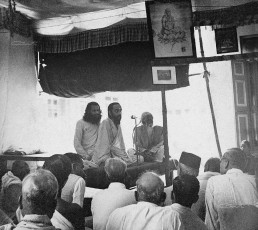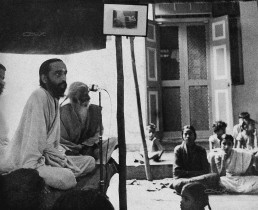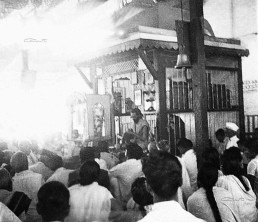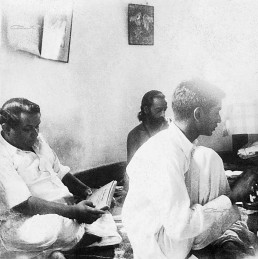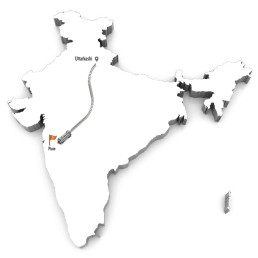
Jnana Yajna 1

Year & Dates:
December 31, 1951 to April 08, 1952

Yajna Topics:
Kenopanishad and Kathopanishad

Place:
Ganesha Temple, Rasta Peth, Pune, India.
True to His deep conviction that “Hinduism in its whole vigour and power is in the Upanishads,” Pujya Gurudev Swami Chinmayananda’s first Jnana Yajna was an extraordinary offering of Knowledge in its most strong, sublime form. His plan was bold – a 100-day Yajna where the Swami would expound on the exalted Truth declared in Kenopanishad and Kathopanishad. In spite of hesitation, lack of support, and even opposition from varied quarters, His painstaking, selfless efforts to give the Highest were like opening the floodgates of an ocean of Knowledge.
Vedantic Renaissance Begins
From an audience of only 18 on the first day of His Jnana Yajna on Dec.31, 1951, at the small Ganesha Temple in Rasta Peth, Pune, the crowds swelled to over a thousand to hear the glory of Hindu Scriptures explained in English and experience the power of Vedanta Shravanam. For a hundred days, the Yajna evoked the Highest; the unique format of the Jnana Yajna with daily Upanishadic discourses, Akanda Kirtan, bhajans, and clearly-explained homas conducted by priests uplifted an audience that had been motivated to also practice brahmacharya to absorb the essence of the Supreme Knowledge.
A tireless, fearless Sage had taken up the divine sankalpa of a Vedantic Renaissance.
There was no turning back – the Goal was glorious, and the Way was lit with Grace and great blessings of Mother Shruti and His Gurus.
In Admiration
Shri Madhukar Veeraswami Naidu of Chinchwad, Pune recalls how he was compelled to attend the discourses of the first Jnana Yajna. He had been a regular visitor to the Ganesha temple, solely interested in taking the prasad, which was distributed in the evening. He was much drawn towards this young swami there holding forth so eloquently on the scriptures. “My mission is to convert Hindus to Hinduism,” said Gurudev. These words still ring in Naidu’s ears. Here was a swami, a stranger to Pune, lived in Madras Dharamshala, dyeing ochre the cloth given to him by some devotees, speaking impeccable English, wearing a unique head-dress, and working with missionary zeal. All these traits appealed to the residents of Poona at that time.
Pujya Gurudev thus sounded the auspicious conch of the Chinmaya Movement on 31 December 1951 at Pune. A saffron flag with the mystic syllable ॐ inscribed on it was first hoisted there.
For the complete story of the first Jnana Yajna: Story Behind First Jnana Yajna; Jnana Yajna Part 1; Jnana Yajna Part 2
Photo Gallery
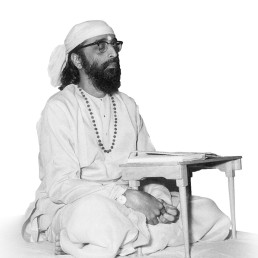
“Think,” Says Pujya Gurudev
“Though the Guru indicates to the burning aspirant that Truth is “that Life Centre which manifests as the power of sight in the eye, the power of hearing in the ear, the power of speech in the tongue etc.,” he is equally anxious to warn the disciple; “ the Absolute Truth is that power which is in no way associated with any of its seeming conditionings such as the ear, eye, mind, etc.”
From Kenopanishad Yajna Prasad Vol.4, p.130
Wonderful is he who comprehends: – What a rare percentage of the whole can in each generation come to live the voiceless joy of their life’s fulfillment. The chance to hear is rare; even when heard to digest and understand those subtle ideas is rarer; a Master, who is efficient enough to initiate a student into the Absolute and satisfying all his doubts, guide him into the Realms Beyond is rarer and, even when an individual comes to be lucky to enjoy the blessings of all the above three, Lord Death says, only the luckiest one comes to experience Godhood in this very birth while listening to the teacher discoursing upon the Sruti texts.
From Kathopanishad Yajna Prasad, Vol.1, Part 3 p.107
Chariot of Wisdom
Transport yourself back to the enchanting era of 1951-52 and experience the profound first yajna. Fast forward to 1982, where a later yajna on Kathopanishad unfolds, offering a chance to relive the wisdom and insights.
Explore the profound metaphor of the chariot in this excerpt from a Kathopanishad discourse by Swami Chinmayananda in Toronto, Canada in 1982. Delve into the relationship between the Lower and Higher Self, understanding the mind as the steering wheel controlled by intellect. Discover how sense organs serve as trotting horses, dragging the body through the muddy roads of sensuality. Unravel the analogy of Arjuna as the individual in the body, with Krishna as the pure intelligence guiding the chariot. Join the insightful journey of self-contemplation and learn to navigate the roads of life with a pure intellect.
